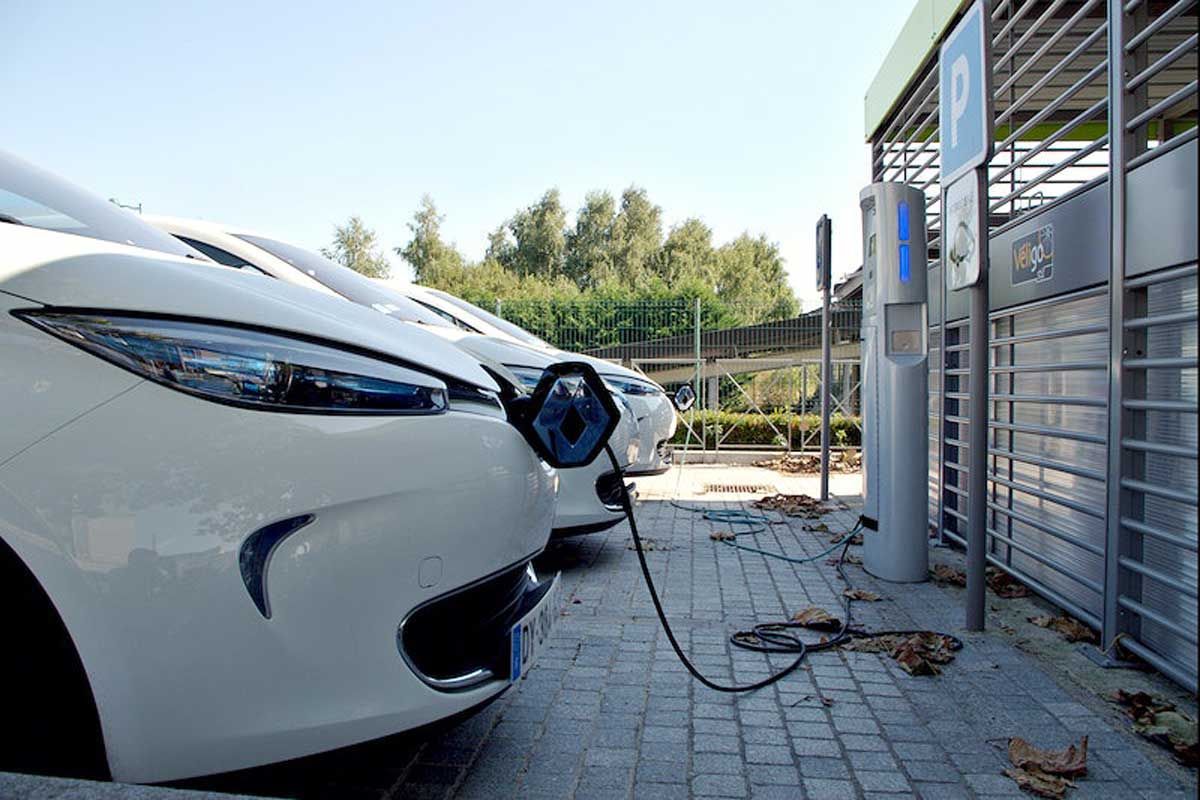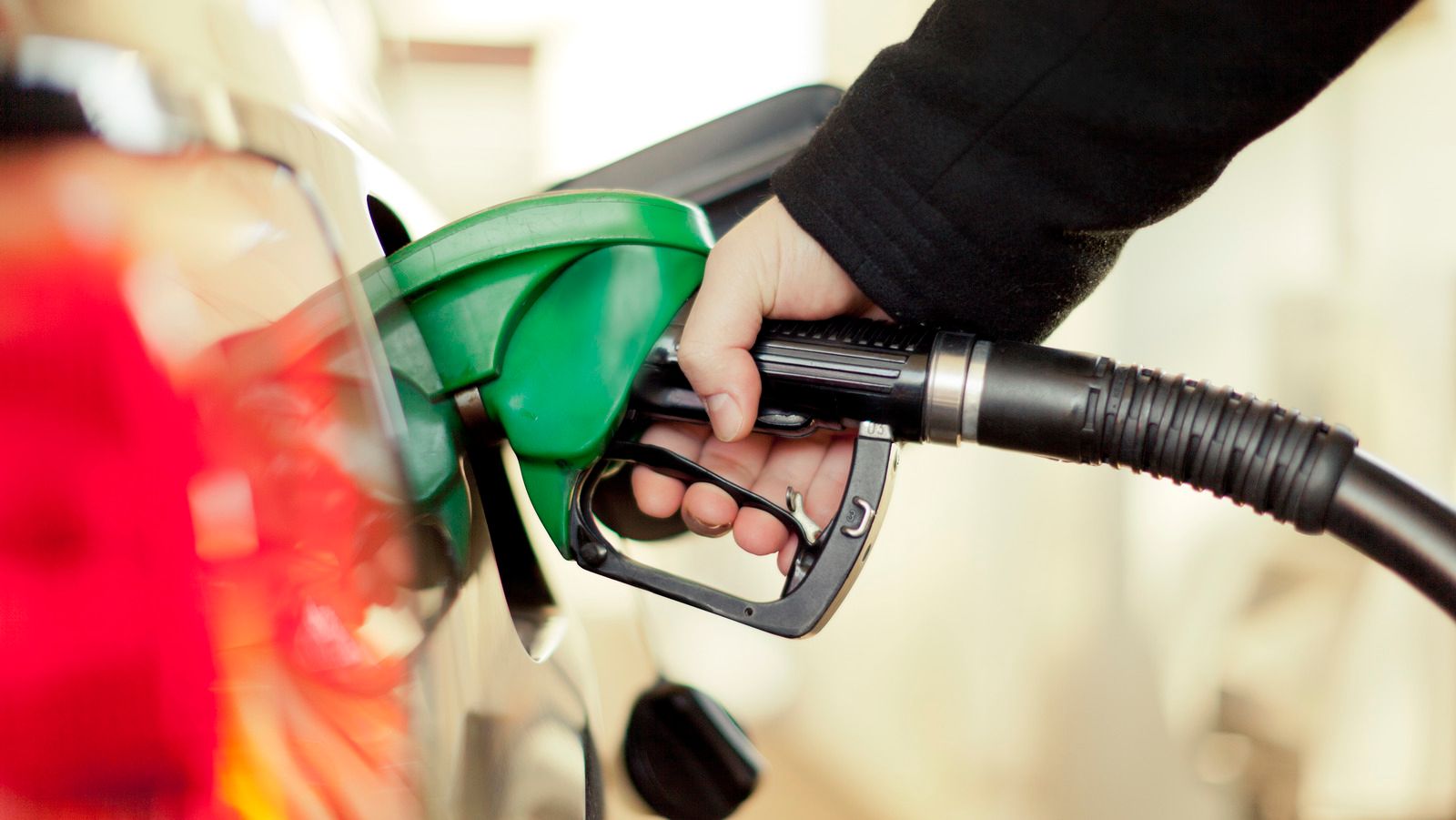
The decision between a Honda Civic and a Toyota Corolla often comes down to a few critical factors, with fuel efficiency consistently topping the list for many discerning consumers. Both models have carved out formidable reputations in the compact sedan market, lauded for their reliability, practicality, and economical operation. Yet, the question of which truly excels in miles per gallon (MPG) remains a central point of discussion, prompting a deeper dive beyond mere specifications and general assumptions.
This comprehensive comparison aims to shed light on the real-world fuel efficiency of these two perennial favorites, drawing on official ratings, detailed owner experiences, and the underlying engineering that defines their performance. We will break down various aspects, from their fundamental design philosophies to the subtle nuances of trim levels, to provide a clear, data-driven perspective. Our goal is to empower you with the thorough understanding needed to make an informed choice, especially when considering the significant long-term impact of fuel economy on your budget and overall ownership experience. This analysis will equip you with the insights to confidently finance your car and enjoy years of economical, dependable driving.

1. **Honda Civic: Standout Features and Practicality**The Honda Civic consistently makes a strong case for itself through a compelling combination of thoughtful design and highly practical features, appealing to a broad spectrum of drivers. Its well-rounded powertrain, for instance, offers a commendable balance of both horsepower and fuel efficiency. This engineering feat ensures that drivers do not have to compromise on dynamic performance for the sake of economical operation, a crucial consideration in today’s competitive compact sedan segment.
Beyond its energetic yet efficient powertrain, the Civic provides a notably spacious interior, meticulously designed to comfortably accommodate up to five passengers. This generous cabin volume positions it as an eminently practical choice, whether for families managing the daily school run and errands or for individuals who frequently travel with friends on longer excursions. The emphasis on interior space significantly enhances the overall driving and passenger experience, making journeys feel less confined.
Furthermore, the Civic’s competitive price point, coupled with a generous fuel tank capacity, significantly enhances its overall value proposition for budget-conscious buyers. These attributes allow owners to finance your car effectively and benefit from extended driving ranges, reducing the frequency of stops at the gas pump. Such features underscore the Civic’s commitment to delivering a vehicle that is not only efficient but also convenient, comfortable, and economically sensible for everyday use, especially in the ongoing Honda vs Toyota debate.
Car Model Information: 2024 Honda Civic Sport
Caption: 2024 Honda Civic liftback
Manufacturer: Honda
Aka: ubl
Production: 1972–present
Class: Subcompact car
BodyStyle: fastback,Sedan (automobile)
Layout: Front-engine, front-wheel-drive layout,Front-engine, four-wheel-drive layout
Predecessor: Honda N600,Honda Z600
Categories: 1980s cars, 1990s cars, 2000s cars, 2010s cars, 2020s cars
Summary: The Honda Civic (Japanese: ホンダ・シビック, Hepburn: Honda Shibikku) is a series of automobiles manufactured by Honda since 1972. As of 2023, the Civic is positioned between the Honda Fit/City and Honda Accord in Honda’s global passenger car line-up. It is one of the best-selling automobiles in history, with over 27 million units sold through 2021.
The first-generation Civic was introduced in July 1972 as a two-door fastback sedan, followed by a three-door hatchback that September. With a 1,169 cc transverse engine and front-wheel drive, the car provided good interior space despite its small overall dimensions. Initially gaining a reputation for being fuel-efficient, reliable and environmentally friendly, later iterations have become known for performance and sportiness, especially the Civic Si, SiR, and Type R versions. It is currently in its eleventh generation, which has been produced since 2021.
The Civic has often been rebadged for international markets, and it served as the basis for the Honda CR-X, the Honda CR-X del Sol, the Concerto, the first generation Prelude, the Civic Shuttle (which later became the Orthia) and the CR-V (which in turn was used as the basis for the Honda FR-V).
Get more information about: Honda Civic
Buying a high-performing used car >>>
Brand: Honda Model: Civic
Price: $23,487 Mileage: 37,435 mi.
Read more about: Unearthing Unexpected Value: 9 Economy Rides That Prove Affordability Doesn’t Mean Compromise
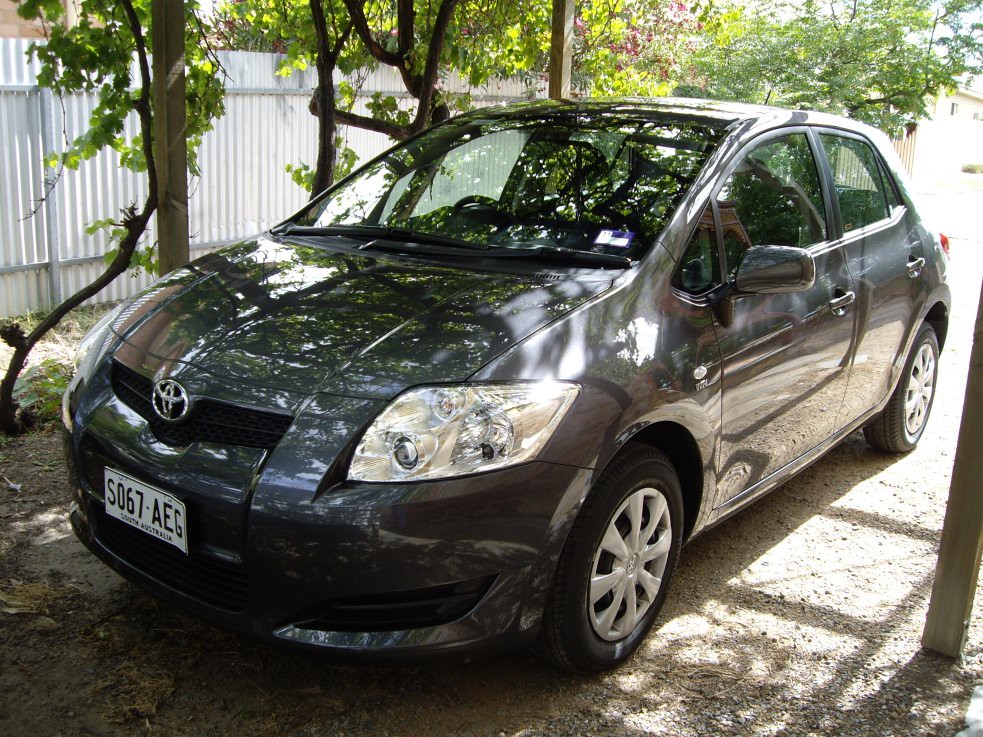
2. **Toyota Corolla: Notable Attributes and Efficiency Focus**The Toyota Corolla stands as a formidable contender in the compact sedan market, distinguished primarily by its long-standing and well-earned reputation for unwavering reliability and consistently impressive fuel efficiency. These core attributes make it a highly practical and trustworthy choice for a wide array of drivers, from daily commuters navigating city streets to those planning extensive road trips. The Corolla’s consistent, dependable performance in these crucial areas has firmly cemented its status as a global favorite.
Inside, the Corolla presents a meticulously designed interior that prioritizes occupant comfort and utility, offering ample volume for both passengers and cargo. This efficient and intelligent use of space ensures that the vehicle comfortably accommodates families and individuals alike, proving its versatility for various daily needs and occasional larger loads. The thoughtful interior layout contributes significantly to a comfortable and highly functional driving environment, reinforcing its broad appeal as a dependable daily driver.
One of the key draws for many Corolla buyers is its commitment to fuel economy, which is evident across its range of efficient engine options. These include variants with a turbocharger, designed to provide a compelling balance of power and efficiency. This mirrors the engineering philosophies seen in other fuel-sipping models, ensuring that drivers can extract the maximum utility and mileage from every single gallon of gas, further underscoring Toyota’s dedication to optimizing fuel consumption.
Car Model Information: 2025 Toyota Corolla LE
Name: Toyota Corolla
Caption: Twelfth generation model (2020, hatchback)
Manufacturer: Toyota
Aka: unbulleted list
Production: November 1966 – present
Class: unbulleted list
Predecessor: Toyota Publica
Categories: 1970s cars, 1980s cars, 1990s cars, 2000s cars, 2010s cars
Summary: The Toyota Corolla (Japanese: トヨタ・カローラ, Hepburn: Toyota Karōra) is a series of compact cars (formerly subcompact) manufactured and marketed globally by the Japanese automaker Toyota Motor Corporation. Introduced in 1966, the Corolla has been the world’s best-selling automobile of all time since 1997, when it surpassed the Volkswagen Beetle. Toyota reached the milestone of 50 million Corollas sold over twelve generations in 2021.
The name Corolla is part of Toyota’s naming tradition of using names derived from the Toyota Crown for sedans, with “corolla” Latin for “small crown”. The Corolla has always been exclusive in Japan to Toyota Corolla Store locations, and manufactured in Japan with a twin, called the Toyota Sprinter until 2000. From 2006 to 2018 in Japan and much of the world, and from 2018 to 2020 in Taiwan, the hatchback companion had been called the Toyota Auris.
Early models were mostly rear-wheel drive, while later models have been front-wheel drive. Four-wheel drive versions have also been produced, and it has undergone several major redesigns. The Corolla’s traditional competitors have been the Nissan Sunny, introduced the same year as the Corolla in Japan and the later Nissan Sentra, Subaru Leone, Honda Civic and Mitsubishi Lancer. The Corolla’s chassis designation code is “E”, as described in Toyota’s chassis and engine codes.
Get more information about: Toyota Corolla
Buying a high-performing used car >>>
Brand: Toyota Model: Corolla
Price: $22,434 Mileage: 7,953 mi.
Read more about: Mastering the Concrete Jungle: Our Top 13 Small Cars for City Life and Easy Parking
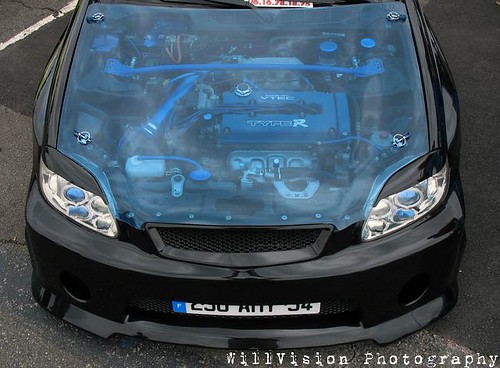
3. **The Enduring Appeal of Compact Sedans**Compact sedans, exemplified by the popular Honda Civic and Toyota Corolla, continue to hold a strong and enduring appeal in the automotive market for a multitude of compelling and practical reasons. Their manageable length is a primary advantage, making them exceptionally easy to maneuver through congested urban environments. This inherent nimbleness is invaluable for navigating tight city streets, making quick lane changes, and finding convenient parking in crowded areas.
Beyond their compact and agile dimensions, these vehicles are consistently equipped with a comprehensive suite of features designed to enhance both convenience and safety for all occupants. Standard inclusions like power windows contribute to everyday ease, while advanced safety technologies, such as a blind spot monitor, significantly improve situational awareness and the overall daily driving experience. These thoughtful integrations underscore a commitment to providing modern amenities that cater directly to the practical and safety-conscious needs of contemporary drivers.
The versatility of compact sedans is further amplified by the wide availability of various trim levels for both the Civic and Corolla. This extensive flexibility enables buyers to customize their vehicles precisely to their specific climate needs, personal preferences, and technological desires. Whether it’s advanced climate control for harsh winters or integrated connectivity options, these choices ensure a comfortable and personalized driving experience regardless of the external conditions.
Read more about: Seriously, What Happened? A Deep Dive into 14 Once-Essential Car Features Drivers Don’t Miss Anymore!
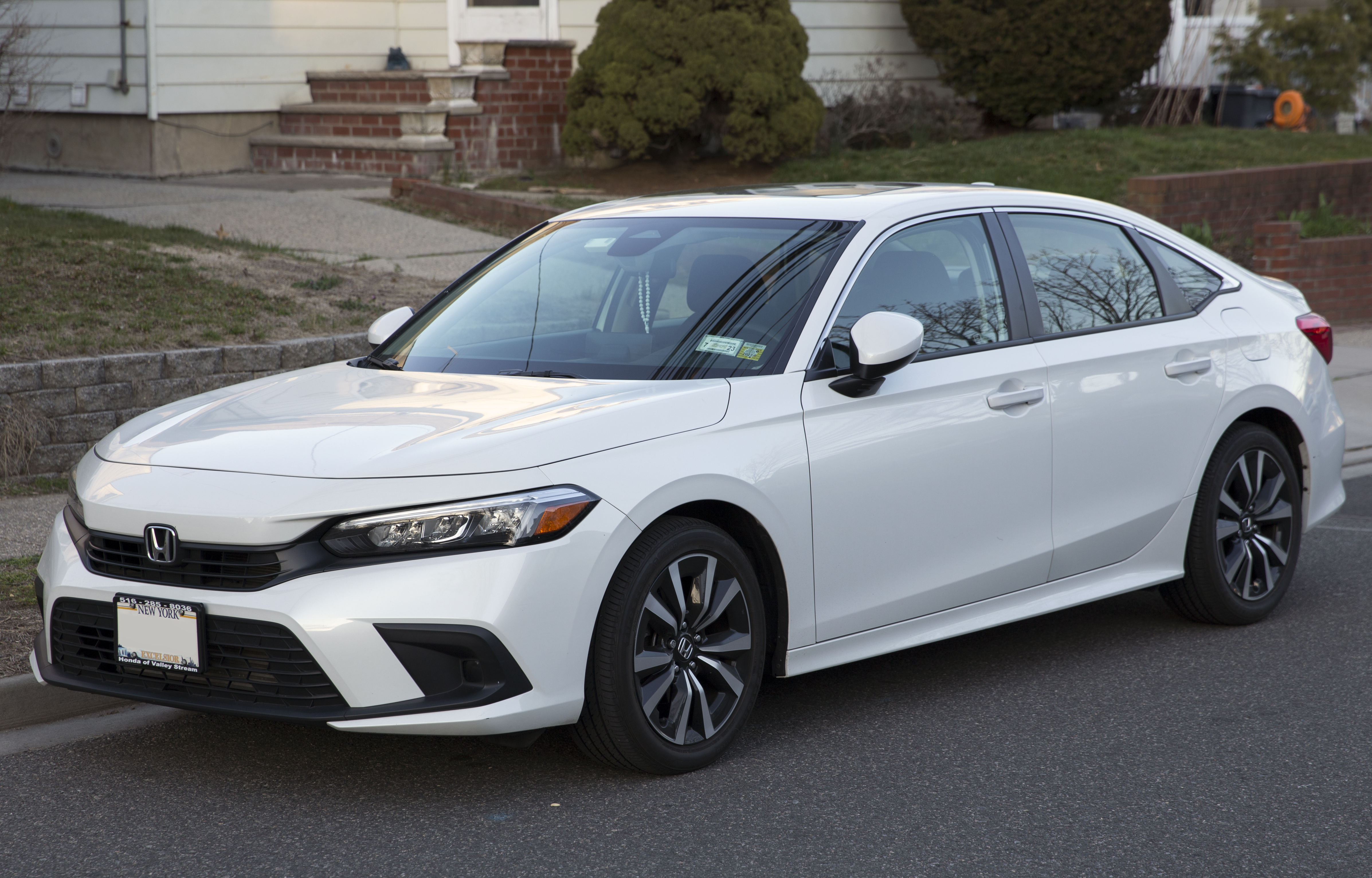
4. **Official MPG Ratings: Honda Civic’s Figures**When the discussion turns specifically to fuel efficiency, the Honda Civic consistently delivers impressive official figures, firmly positioning it as a top choice for drivers who prioritize economical operation without sacrificing dynamic performance. Its diverse range of engine options, particularly the gasoline variants, are meticulously engineered not only to optimize power delivery but also to maintain superior fuel economy. This blend ensures a consistently energetic yet remarkably efficient driving experience across various conditions.
Depending on the specific trim level and the chosen gear configuration, the Honda Civic is notably capable of achieving up to an impressive 36 MPG on the highway. This strong figure is a clear testament to Honda’s steadfast commitment to designing and manufacturing highly fuel-efficient vehicles, offering substantial savings for regular commuters and those who frequently undertake long-distance journeys. The emphasis on robust highway efficiency makes it an exceptionally attractive choice for a wide array of driving needs.
It is important to note that these official ratings provide a crucial baseline, representing the vehicle’s potential under controlled testing conditions. However, they serve as a vital benchmark for consumers comparing efficiency across different models. The Civic’s ability to demonstrate such competitive numbers highlights its advanced engineering and aerodynamic design, both contributing significantly to its strong fuel-saving capabilities on paper.
Car Model Information: 2024 Honda Civic Sport
Caption: 2024 Honda Civic liftback
Manufacturer: Honda
Aka: ubl
Production: 1972–present
Class: Subcompact car
BodyStyle: fastback,Sedan (automobile)
Layout: Front-engine, front-wheel-drive layout,Front-engine, four-wheel-drive layout
Predecessor: Honda N600,Honda Z600
Categories: 1980s cars, 1990s cars, 2000s cars, 2010s cars, 2020s cars
Summary: The Honda Civic (Japanese: ホンダ・シビック, Hepburn: Honda Shibikku) is a series of automobiles manufactured by Honda since 1972. As of 2023, the Civic is positioned between the Honda Fit/City and Honda Accord in Honda’s global passenger car line-up. It is one of the best-selling automobiles in history, with over 27 million units sold through 2021.
The first-generation Civic was introduced in July 1972 as a two-door fastback sedan, followed by a three-door hatchback that September. With a 1,169 cc transverse engine and front-wheel drive, the car provided good interior space despite its small overall dimensions. Initially gaining a reputation for being fuel-efficient, reliable and environmentally friendly, later iterations have become known for performance and sportiness, especially the Civic Si, SiR, and Type R versions. It is currently in its eleventh generation, which has been produced since 2021.
The Civic has often been rebadged for international markets, and it served as the basis for the Honda CR-X, the Honda CR-X del Sol, the Concerto, the first generation Prelude, the Civic Shuttle (which later became the Orthia) and the CR-V (which in turn was used as the basis for the Honda FR-V).
Get more information about: Honda Civic
Buying a high-performing used car >>>
Brand: Honda Model: Civic
Price: $23,487 Mileage: 37,435 mi.
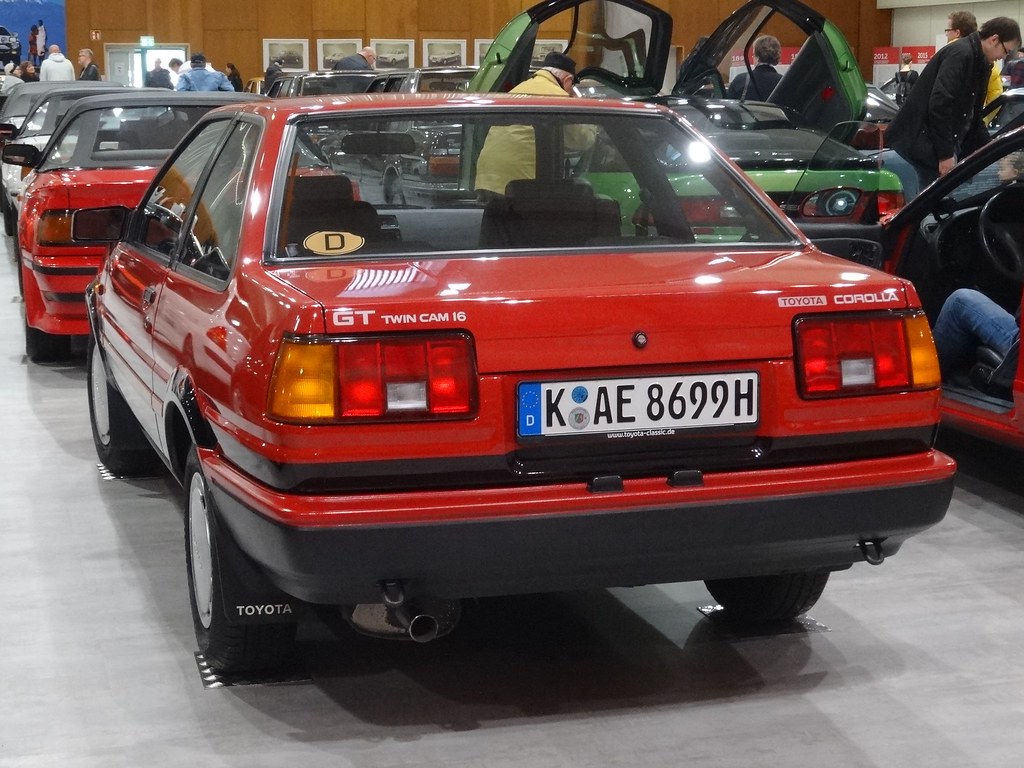
5. **Official MPG Ratings: Toyota Corolla’s Economy Stats**The Toyota Corolla is widely and justifiably acclaimed for its consistently impressive official fuel economy statistics, firmly establishing it as an exceptionally practical and cost-effective choice. This is particularly true for drivers who frequently travel on highways, where its efficient design truly shines. Its range of efficient engine options are specifically designed and optimized to maximize mileage, providing a clear and tangible advantage for daily commutes and extended road trips alike, scenarios where sustained efficiency is paramount.
Drivers of the Toyota Corolla can expect to achieve up to an impressive 38 MPG on the highway, according to official ratings. This figure powerfully highlights Toyota’s unwavering dedication to engineering vehicles that prioritize and optimize fuel consumption. This strong performance on the open road directly translates into fewer inconvenient stops at the gas station and, more importantly, significant monetary savings over the long term. Such economic efficiency is a critical and often deciding factor for budget-conscious consumers meticulously evaluating their various vehicle options.
The Corolla’s strong showing in official MPG ratings is a reflection of its sophisticated powertrain innovations, including advanced engine designs and the widespread use of Continuously Variable Transmissions (CVTs). These components work in harmony to ensure that power delivery is smooth and efficient, minimizing fuel waste and maximizing the distance traveled per gallon. This meticulous engineering directly contributes to its reputation as a fuel-sipping champion in the compact segment.
Car Model Information: 2025 Toyota Corolla LE
Name: Toyota Corolla
Caption: Twelfth generation model (2020, hatchback)
Manufacturer: Toyota
Aka: unbulleted list
Production: November 1966 – present
Class: unbulleted list
Predecessor: Toyota Publica
Categories: 1970s cars, 1980s cars, 1990s cars, 2000s cars, 2010s cars
Summary: The Toyota Corolla (Japanese: トヨタ・カローラ, Hepburn: Toyota Karōra) is a series of compact cars (formerly subcompact) manufactured and marketed globally by the Japanese automaker Toyota Motor Corporation. Introduced in 1966, the Corolla has been the world’s best-selling automobile of all time since 1997, when it surpassed the Volkswagen Beetle. Toyota reached the milestone of 50 million Corollas sold over twelve generations in 2021.
The name Corolla is part of Toyota’s naming tradition of using names derived from the Toyota Crown for sedans, with “corolla” Latin for “small crown”. The Corolla has always been exclusive in Japan to Toyota Corolla Store locations, and manufactured in Japan with a twin, called the Toyota Sprinter until 2000. From 2006 to 2018 in Japan and much of the world, and from 2018 to 2020 in Taiwan, the hatchback companion had been called the Toyota Auris.
Early models were mostly rear-wheel drive, while later models have been front-wheel drive. Four-wheel drive versions have also been produced, and it has undergone several major redesigns. The Corolla’s traditional competitors have been the Nissan Sunny, introduced the same year as the Corolla in Japan and the later Nissan Sentra, Subaru Leone, Honda Civic and Mitsubishi Lancer. The Corolla’s chassis designation code is “E”, as described in Toyota’s chassis and engine codes.
Get more information about: Toyota Corolla
Buying a high-performing used car >>>
Brand: Toyota Model: Corolla
Price: $22,434 Mileage: 7,953 mi.
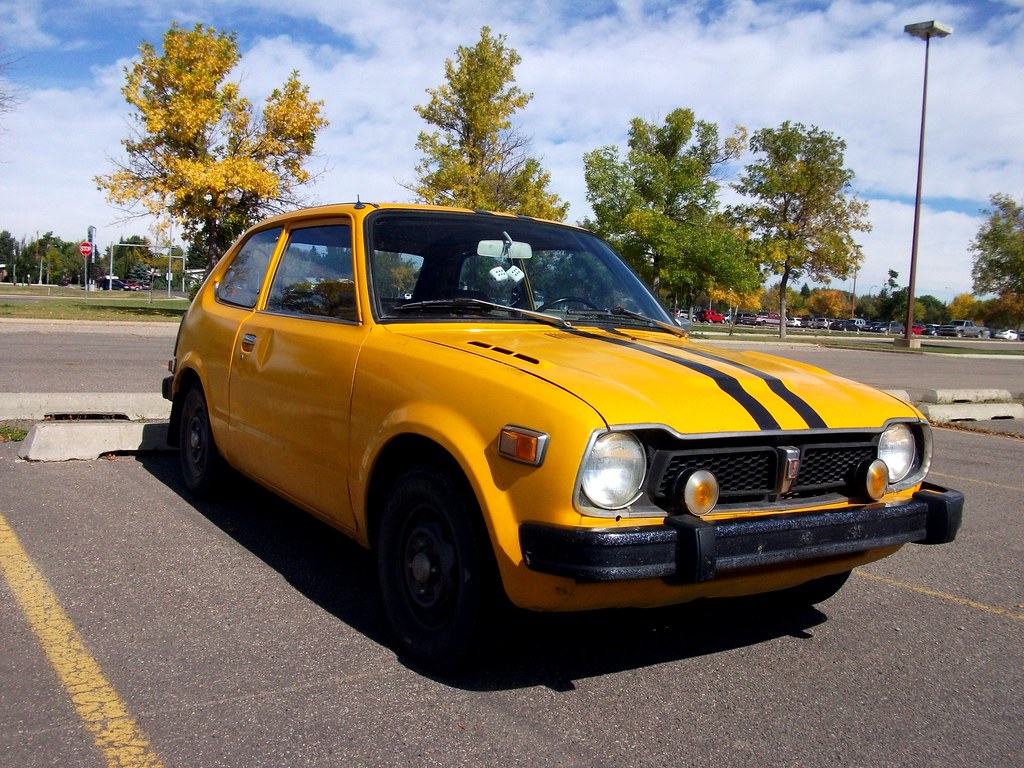
6. **Impact of Trim Levels on MPG Performance**The selection of a specific trim level for both the Honda Civic and the Toyota Corolla can exert a surprisingly significant influence on their respective MPG ratings, a nuanced detail often overlooked by prospective buyers focused solely on base models. For instance, opting for a Civic equipped with Honda’s renowned VTEC technology might indeed enhance performance, but crucially, it does so while still largely maintaining commendable fuel efficiency. This balance is particularly evident in models featuring convenient additions like advanced cruise control systems and integrated navigation, which can sometimes add weight.
Similarly, choosing a Toyota Corolla with popular aesthetic or convenience upgrades, such as a sunroof or the inclusion of Android Auto integration, can subtly alter the vehicle’s overall weight and its aerodynamic profile. These modifications, while undoubtedly enhancing comfort, connectivity, or aesthetic appeal, possess the potential to slightly impact the vehicle’s overall fuel economy. Understanding these intricate details is absolutely crucial for making an informed decision that harmonizes desired features with the pursuit of optimal MPG performance.
The variations don’t stop at just weight and aerodynamics. Differences in tire sizes, wheel designs, and even specific suspension tuning across various trims can also play a role. Larger, heavier wheels, for example, can increase rolling resistance, subtly affecting fuel consumption. Therefore, a careful consideration of these components across the trim spectrum is vital for anyone prioritizing maximum fuel efficiency.
Car Model Information: 2024 Honda Civic Sport
Caption: 2024 Honda Civic liftback
Manufacturer: Honda
Aka: ubl
Production: 1972–present
Class: Subcompact car
BodyStyle: fastback,Sedan (automobile)
Layout: Front-engine, front-wheel-drive layout,Front-engine, four-wheel-drive layout
Predecessor: Honda N600,Honda Z600
Categories: 1980s cars, 1990s cars, 2000s cars, 2010s cars, 2020s cars
Summary: The Honda Civic (Japanese: ホンダ・シビック, Hepburn: Honda Shibikku) is a series of automobiles manufactured by Honda since 1972. As of 2023, the Civic is positioned between the Honda Fit/City and Honda Accord in Honda’s global passenger car line-up. It is one of the best-selling automobiles in history, with over 27 million units sold through 2021.
The first-generation Civic was introduced in July 1972 as a two-door fastback sedan, followed by a three-door hatchback that September. With a 1,169 cc transverse engine and front-wheel drive, the car provided good interior space despite its small overall dimensions. Initially gaining a reputation for being fuel-efficient, reliable and environmentally friendly, later iterations have become known for performance and sportiness, especially the Civic Si, SiR, and Type R versions. It is currently in its eleventh generation, which has been produced since 2021.
The Civic has often been rebadged for international markets, and it served as the basis for the Honda CR-X, the Honda CR-X del Sol, the Concerto, the first generation Prelude, the Civic Shuttle (which later became the Orthia) and the CR-V (which in turn was used as the basis for the Honda FR-V).
Get more information about: Honda Civic
Buying a high-performing used car >>>
Brand: Honda Model: Civic
Price: $23,487 Mileage: 37,435 mi.
Read more about: The 401k Killer: 14 Premium Vehicles That Cost More Than Just Their Sticker Price

7. **Real-World Efficiency: Insights from Honda Civic Drivers**From the invaluable perspective of Honda Civic drivers, the vehicle’s real-world fuel efficiency often not only meets but frequently surpasses initial expectations, delivering a pleasant and welcome surprise at the fuel pump. Many owners consistently report that the actual miles per gallon (MPG) they achieve in their diverse daily commutes and longer journeys frequently exceeds the official, laboratory-tested ratings. This is particularly true when they effectively utilize and engage the integrated, smart features such as adaptive cruise control.
Adaptive cruise control, in particular, is far more than just a comfort-enhancing feature for long drives; it plays a strategic and significant role in optimizing fuel consumption. By autonomously maintaining an optimal speed and a consistent, safe distance from preceding vehicles, this system actively encourages a smoother, more consistent driving pattern. This consistent pattern directly contributes to better overall MPG, as it helps mitigate the inefficiencies often associated with frequent acceleration and deceleration, leading to more predictable fuel use.
Furthermore, the intuitive and user-friendly touchscreen infotainment system within the Civic, which provides effortless access to navigation, communication, and music, allows drivers to remain singularly focused on the road ahead. This minimizes distractions and fosters a smooth and uninterrupted driving experience. Coupled with the Civic’s characteristically responsive and precise steering, these elements collectively create an environment where economical driving feels remarkably effortless and engaging.
Car Model Information: 2024 Honda Civic Sport
Caption: 2024 Honda Civic liftback
Manufacturer: Honda
Aka: ubl
Production: 1972–present
Class: Subcompact car
BodyStyle: fastback,Sedan (automobile)
Layout: Front-engine, front-wheel-drive layout,Front-engine, four-wheel-drive layout
Predecessor: Honda N600,Honda Z600
Categories: 1980s cars, 1990s cars, 2000s cars, 2010s cars, 2020s cars
Summary: The Honda Civic (Japanese: ホンダ・シビック, Hepburn: Honda Shibikku) is a series of automobiles manufactured by Honda since 1972. As of 2023, the Civic is positioned between the Honda Fit/City and Honda Accord in Honda’s global passenger car line-up. It is one of the best-selling automobiles in history, with over 27 million units sold through 2021.
The first-generation Civic was introduced in July 1972 as a two-door fastback sedan, followed by a three-door hatchback that September. With a 1,169 cc transverse engine and front-wheel drive, the car provided good interior space despite its small overall dimensions. Initially gaining a reputation for being fuel-efficient, reliable and environmentally friendly, later iterations have become known for performance and sportiness, especially the Civic Si, SiR, and Type R versions. It is currently in its eleventh generation, which has been produced since 2021.
The Civic has often been rebadged for international markets, and it served as the basis for the Honda CR-X, the Honda CR-X del Sol, the Concerto, the first generation Prelude, the Civic Shuttle (which later became the Orthia) and the CR-V (which in turn was used as the basis for the Honda FR-V).
Get more information about: Honda Civic
Buying a high-performing used car >>>
Brand: Honda Model: Civic
Price: $23,487 Mileage: 37,435 mi.
Read more about: 2025 Honda CR-V vs. Toyota RAV4: An In-Depth Buyer’s Guide to the Compact SUV Leaders
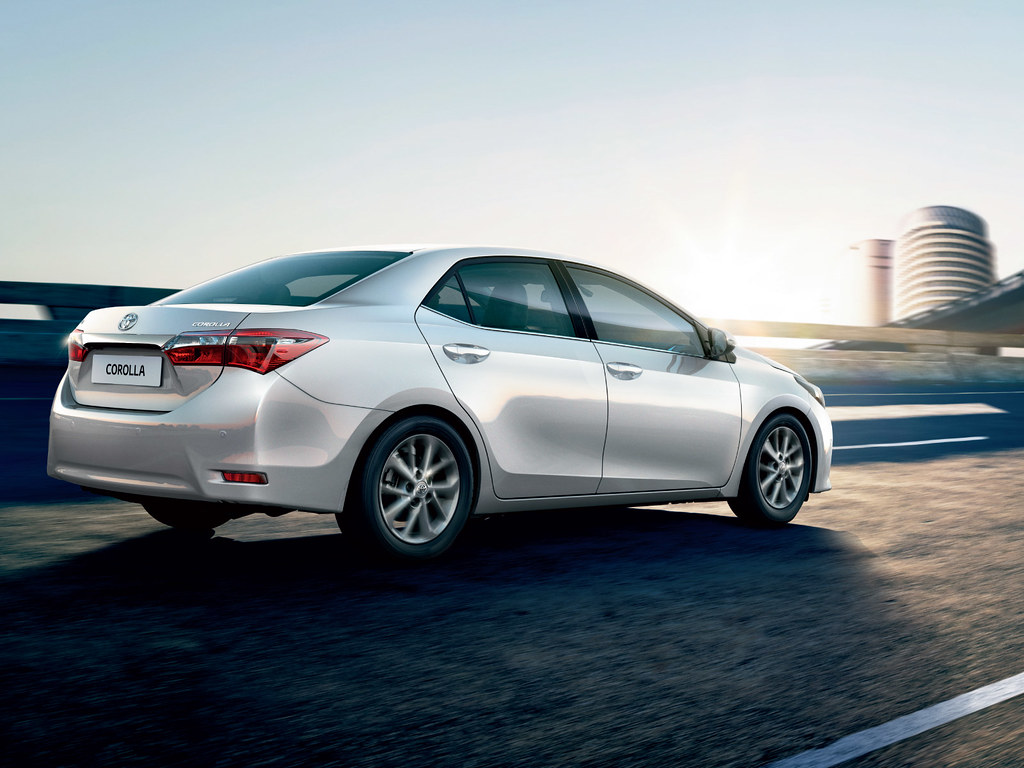
8. **Feedback From Toyota Corolla Owners**As a dedicated Toyota Corolla owner, there’s a widely shared sentiment that the vehicle’s real-world miles per gallon (MPG) performance frequently aligns very closely with the manufacturer’s initial claims. This remarkable consistency is a fundamental factor for a significant number of drivers who place a high priority on predictable and reliable fuel economy. Such accuracy in performance figures mirrors similar observations often made in broader Honda vs Toyota comparisons, fostering substantial consumer trust in the brand’s commitment to efficiency.
A pivotal engineering component frequently highlighted for its role in this consistent efficiency is the continuously variable transmission (CVT) found in the Corolla. This sophisticated transmission is meticulously designed to optimize fuel consumption, a benefit particularly noticeable during extensive periods of highway driving. The CVT ensures a seamlessly smooth and uninterrupted power delivery, effectively preventing the abrupt and less efficient shifts that can often lead to wasted fuel and a less refined driving experience.
Furthermore, owners consistently report that the inherent stability provided by the vehicle’s carefully calibrated weight and impressive traction capabilities contributes positively to its overall robust performance and composed demeanor on various road surfaces. This well-engineered build quality allows drivers to enjoy a remarkably smooth and confident ride, even when navigating through diverse and sometimes challenging weather conditions, enhancing both safety and comfort.
Ultimately, this thoughtful combination of verified real-world fuel economy, advanced transmission technology, and a solidly engineered chassis enables Corolla owners to achieve genuinely impressive fuel economy across a wide array of daily driving scenarios. It powerfully underscores Toyota’s meticulous approach to delivering a vehicle that is not only inherently efficient but also remarkably dependable and exceptionally comfortable for everyday use, securing its strong position as a top contender for discerning efficiency-minded drivers.
Car Model Information: 2025 Toyota Corolla LE
Name: Toyota Corolla
Caption: Twelfth generation model (2020, hatchback)
Manufacturer: Toyota
Aka: unbulleted list
Production: November 1966 – present
Class: unbulleted list
Predecessor: Toyota Publica
Categories: 1970s cars, 1980s cars, 1990s cars, 2000s cars, 2010s cars
Summary: The Toyota Corolla (Japanese: トヨタ・カローラ, Hepburn: Toyota Karōra) is a series of compact cars (formerly subcompact) manufactured and marketed globally by the Japanese automaker Toyota Motor Corporation. Introduced in 1966, the Corolla has been the world’s best-selling automobile of all time since 1997, when it surpassed the Volkswagen Beetle. Toyota reached the milestone of 50 million Corollas sold over twelve generations in 2021.
The name Corolla is part of Toyota’s naming tradition of using names derived from the Toyota Crown for sedans, with “corolla” Latin for “small crown”. The Corolla has always been exclusive in Japan to Toyota Corolla Store locations, and manufactured in Japan with a twin, called the Toyota Sprinter until 2000. From 2006 to 2018 in Japan and much of the world, and from 2018 to 2020 in Taiwan, the hatchback companion had been called the Toyota Auris.
Early models were mostly rear-wheel drive, while later models have been front-wheel drive. Four-wheel drive versions have also been produced, and it has undergone several major redesigns. The Corolla’s traditional competitors have been the Nissan Sunny, introduced the same year as the Corolla in Japan and the later Nissan Sentra, Subaru Leone, Honda Civic and Mitsubishi Lancer. The Corolla’s chassis designation code is “E”, as described in Toyota’s chassis and engine codes.
Get more information about: Toyota Corolla
Buying a high-performing used car >>>
Brand: Toyota Model: Corolla
Price: $22,434 Mileage: 7,953 mi.
Read more about: Unearthing 15 Unsung 90s Sedans: Reliable Transport Gems for Today’s Commuters
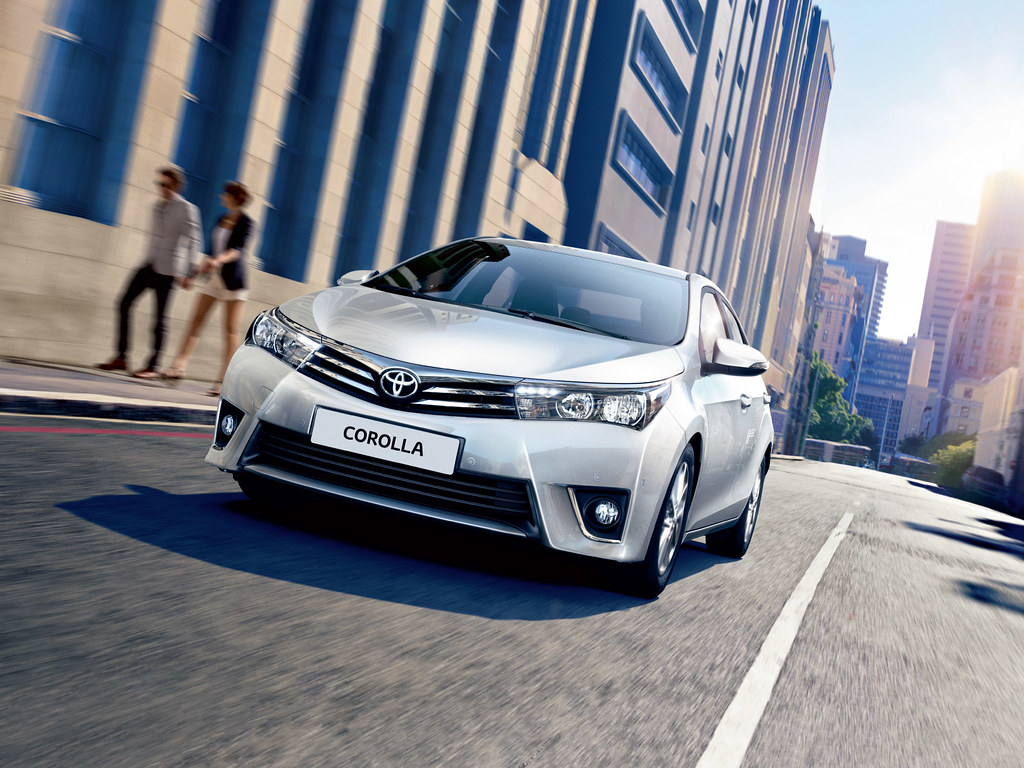
9. **Common Factors Impacting Actual MPG**Beyond the specific characteristics of individual vehicles, a multitude of overarching factors can profoundly impact the actual miles per gallon (MPG) achieved by both the Honda Civic and Toyota Corolla, adding considerable depth to the perennial honda vs toyota comparison. One of the most fundamental and crucial elements influencing fuel efficiency is the specific type of transmission that has been installed in the vehicle, as it dictates how power is effectively delivered and managed to the wheels.
For instance, vehicles that are precisely equipped with continuously variable transmissions (CVTs) frequently demonstrate a notable superiority in fuel efficiency when directly compared to their counterparts featuring traditional automatic transmissions. CVTs are ingeniously designed to maintain the engine’s operation within its most efficient RPM range, thereby significantly minimizing fuel consumption during a diverse array of driving conditions, from congested city traffic to expansive open highways.
Moreover, the practice of diligent and regular vehicle maintenance is absolutely essential for sustaining optimal engine performance and, as a direct consequence, for maximizing overall fuel economy. Adhering to a schedule of routine oil changes is particularly critical, as clean and fresh oil allows the engine to operate smoothly and with peak efficiency. Conversely, the presence of dirty or degraded oil can substantially hinder engine efficiency, leading directly to an increase in fuel consumption over time.
Subtle yet impactful additions, such as integrated view camera systems, can also indirectly influence driving habits in ways that positively contribute to better MPG. By assisting drivers with executing safer maneuvers and promoting a more controlled and measured driving style, these modern technologies can effectively help mitigate instances of rapid acceleration and harsh braking. Such consistently smooth driving patterns are widely recognized as primary contributors to more economical fuel consumption.
Therefore, thoroughly understanding and proactively managing these various influential elements—ranging from the chosen transmission type and essential routine maintenance to the often-underestimated impact of driver assistance features—is paramount for any driver meticulously aiming to maximize their vehicle’s fuel efficiency. Whether one ultimately opts for a Civic, a Corolla, or even another reputable model like an Acura, adopting a holistic approach to vehicle operation and care will consistently yield the most favorable results at the fuel pump, empowering consumers to make truly informed and economically sensible decisions.
Read more about: The Moment of Regret: 14 Compacts Drivers Wished They Never Saw the Price Tag At the Dealer
10. **Honda Civic’s Engine and Technology**The Honda Civic’s sophisticated engine and its integrated suite of technologies are meticulously engineered with a precise dual objective: to unequivocally maximize fuel efficiency while concurrently guaranteeing a consistently smooth, responsive, and ultimately engaging driving experience. This strategic and well-balanced approach vividly highlights Honda’s unwavering commitment to delivering a vehicle that comprehensively excels in both everyday practicality and dynamic driving enjoyment, a rare but sought-after combination.
The Civic proudly offers a remarkably diverse array of powertrain options, encompassing highly refined automatic transmissions and, in specific international markets, even exceptionally efficient diesel engines. This expansive spectrum of choices ensures that the Civic effectively caters to a wide variety of driving preferences, local environmental regulations, and specific regional demands, thus allowing consumers to meticulously select a configuration that optimally suits their individual needs and driving styles. Each variant is carefully optimized for distinct performance characteristics.
Beyond its inherent engineering brilliance, Honda proactively enhances the overall ownership experience by providing a robust and comprehensive warranty program, coupled with invaluable roadside assistance services. These essential support mechanisms, synergistically combined with flexible and accessible options to finance your car, collectively instill a significant degree of peace of mind for drivers. Such comprehensive support unequivocally underscores Honda’s deep-rooted dedication to both long-term reliability and continuous customer care throughout the entire lifespan of the vehicle.
According to reputable and independent automotive analyses conducted by industry stalwarts like Edmunds, the Civic’s highly sophisticated engineering innovations play a profoundly significant and demonstrably crucial role in consistently contributing to its impressive miles per gallon (MPG) ratings. This sustained and consistent performance firmly positions the Civic as a notably strong and competitive contender within the highly dynamic compact sedan category, particularly when meticulously weighed against its formidable and perennial rival in the intense and long-standing honda vs toyota rivalry.
This unwavering focus on integrating cutting-edge technology, ranging from highly advanced fuel-saving engine designs to supportive and intuitive driver assistance features, ensures that Civic owners benefit from a vehicle that is not only remarkably economical to run but also inherently engaging, exceptionally reliable, and technologically advanced. This holistic and forward-thinking approach to vehicle development guarantees that every conceivable aspect contributes positively to its overall efficiency, user satisfaction, and enduring market appeal, thereby solidly cementing its prominent market position.
Car Model Information: 2024 Honda Civic Sport
Caption: 2024 Honda Civic liftback
Manufacturer: Honda
Aka: ubl
Production: 1972–present
Class: Subcompact car
BodyStyle: fastback,Sedan (automobile)
Layout: Front-engine, front-wheel-drive layout,Front-engine, four-wheel-drive layout
Predecessor: Honda N600,Honda Z600
Categories: 1980s cars, 1990s cars, 2000s cars, 2010s cars, 2020s cars
Summary: The Honda Civic (Japanese: ホンダ・シビック, Hepburn: Honda Shibikku) is a series of automobiles manufactured by Honda since 1972. As of 2023, the Civic is positioned between the Honda Fit/City and Honda Accord in Honda’s global passenger car line-up. It is one of the best-selling automobiles in history, with over 27 million units sold through 2021.
The first-generation Civic was introduced in July 1972 as a two-door fastback sedan, followed by a three-door hatchback that September. With a 1,169 cc transverse engine and front-wheel drive, the car provided good interior space despite its small overall dimensions. Initially gaining a reputation for being fuel-efficient, reliable and environmentally friendly, later iterations have become known for performance and sportiness, especially the Civic Si, SiR, and Type R versions. It is currently in its eleventh generation, which has been produced since 2021.
The Civic has often been rebadged for international markets, and it served as the basis for the Honda CR-X, the Honda CR-X del Sol, the Concerto, the first generation Prelude, the Civic Shuttle (which later became the Orthia) and the CR-V (which in turn was used as the basis for the Honda FR-V).
Get more information about: Honda Civic
Buying a high-performing used car >>>
Brand: Honda Model: Civic
Price: $23,487 Mileage: 37,435 mi.
Read more about: Maintenance Money Pit Alert: Unpacking the Real Costs of Car Ownership – Sedans That Will (and Won’t) Drain Your Savings

11. **Toyota Corolla’s Powertrain Innovations**The Toyota Corolla confidently stands as a truly formidable competitor within the intensely competitive compact car segment, a position largely cemented by its continuous and proactive powertrain innovations. These advancements are specifically and expertly designed to significantly enhance its inherent fuel efficiency across all driving conditions. Such dedicated development reflects Toyota’s steadfast commitment to delivering vehicles that are both economically prudent and environmentally conscious.
At the very core of the Corolla’s exemplary efficiency are key technological features such as its highly refined continuously variable transmission (CVT) and its expertly crafted range of exceptionally efficient engine designs. These sophisticated components are meticulously engineered to operate in precise harmony, collectively optimizing the vehicle’s overall performance while consistently maintaining impressive miles per gallon (MPG) ratings across a diverse spectrum of driving scenarios. This synergy ensures remarkably smooth, yet profoundly efficient, power delivery.
Corolla owners frequently and enthusiastically highlight the tangible and practical benefits derived from the vehicle’s thoughtfully designed fuel tank capacity. This generous capacity typically allows for significantly longer journeys without the common inconvenience of frequent stops at the gas station, a feature greatly appreciated by commuters and long-distance travelers alike. This extended range adds a crucial layer of convenience that truly enhances the overall driving experience.
Moreover, the Corolla’s meticulously crafted and intelligently utilized trunk space significantly adds to its overall practicality for a multitude of everyday uses, comfortably accommodating everything from routine grocery runs to substantial luggage for weekend getaways and family vacations. This intelligent optimization of interior volume reinforces its broad appeal as an exceptionally versatile and functional daily driver, catering to diverse consumer needs.
This meticulously calculated combination of advanced powertrain efficiency and thoughtful, highly practical design elements firmly establishes the Corolla as an exceptionally reliable and economically sensible choice for those carefully evaluating their myriad options in the compact sedan market. Its consistent and dependable performance in these crucial areas makes it an undeniably compelling alternative for individuals meticulously comparing the Honda Civic versus the Toyota Corolla.
Car Model Information: 2025 Toyota Corolla LE
Name: Toyota Corolla
Caption: Twelfth generation model (2020, hatchback)
Manufacturer: Toyota
Aka: unbulleted list
Production: November 1966 – present
Class: unbulleted list
Predecessor: Toyota Publica
Categories: 1970s cars, 1980s cars, 1990s cars, 2000s cars, 2010s cars
Summary: The Toyota Corolla (Japanese: トヨタ・カローラ, Hepburn: Toyota Karōra) is a series of compact cars (formerly subcompact) manufactured and marketed globally by the Japanese automaker Toyota Motor Corporation. Introduced in 1966, the Corolla has been the world’s best-selling automobile of all time since 1997, when it surpassed the Volkswagen Beetle. Toyota reached the milestone of 50 million Corollas sold over twelve generations in 2021.
The name Corolla is part of Toyota’s naming tradition of using names derived from the Toyota Crown for sedans, with “corolla” Latin for “small crown”. The Corolla has always been exclusive in Japan to Toyota Corolla Store locations, and manufactured in Japan with a twin, called the Toyota Sprinter until 2000. From 2006 to 2018 in Japan and much of the world, and from 2018 to 2020 in Taiwan, the hatchback companion had been called the Toyota Auris.
Early models were mostly rear-wheel drive, while later models have been front-wheel drive. Four-wheel drive versions have also been produced, and it has undergone several major redesigns. The Corolla’s traditional competitors have been the Nissan Sunny, introduced the same year as the Corolla in Japan and the later Nissan Sentra, Subaru Leone, Honda Civic and Mitsubishi Lancer. The Corolla’s chassis designation code is “E”, as described in Toyota’s chassis and engine codes.
Get more information about: Toyota Corolla
Buying a high-performing used car >>>
Brand: Toyota Model: Corolla
Price: $22,434 Mileage: 7,953 mi.
Read more about: I’m a Mechanic: The 5 Cars I Love to See in My Shop (and the 5 I Warn You to Avoid!)
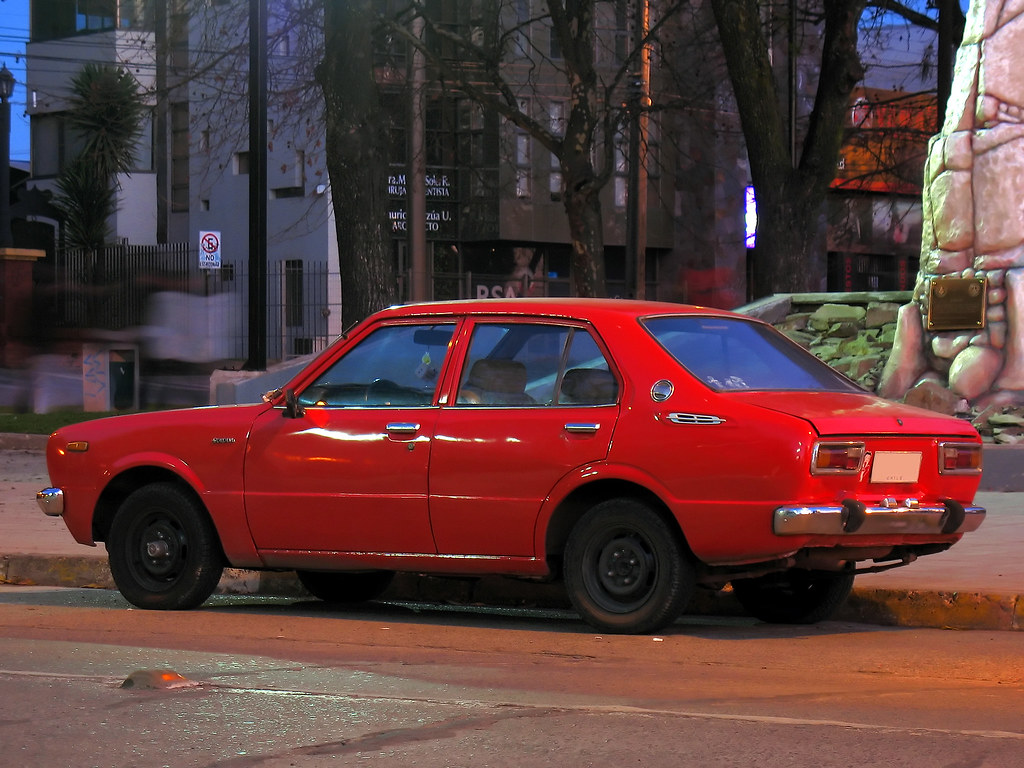
12. **Role of Hybrid Models in MPG Comparison**In the ongoing and increasingly rigorous comparison between the Honda Civic and Toyota Corolla, the advent and continuous evolution of their respective hybrid models play an undeniably significant and increasingly pivotal role in substantially elevating overall fuel efficiency benchmarks. This burgeoning segment directly addresses a critical and growing consumer demand for greener, more economically advantageous, and environmentally responsible transportation solutions.
Both of these distinguished automotive brands, Honda and Toyota, actively offer sophisticated hybrid versions that are meticulously engineered to leverage cutting-edge advanced technological solutions. These innovations are precisely deployed to maximize miles per gallon (MPG), thereby positioning these hybrid variants as exceptionally appealing options for today’s rapidly growing demographic of eco-conscious and financially savvy drivers. Their core design principle centers on achieving unparalleled efficiency.
Beyond the immediate financial savings for individual owners, the broader and more profound environmental impact of these hybrid offerings is truly noteworthy. According to comprehensive and authoritative reports from the National Highway Traffic Safety Administration, these hybrid vehicles not only effectively reduce gasoline consumption but also significantly contribute to lowering harmful exhaust emissions. This dual benefit collectively fosters a far more sustainable and environmentally responsible driving experience for the entire community.
As informed and discerning drivers, we can deeply appreciate how these innovative hybrid models are uniquely capable of providing substantial monetary savings at the fuel pump, a welcome relief especially during periods of volatile and escalating gas prices. Crucially, they achieve this remarkable feat while consistently delivering the renowned reliability and robust performance rightfully expected from both Honda and Toyota, ensuring absolutely no compromise on the essential driving quality.
Furthermore, the increasing accessibility of these eco-friendly and economically advantageous choices through a variety of flexible and consumer-friendly financing options makes the transition to hybrid ownership more attainable for a wider segment of the consumer base. This financial ease of access, combined with their inherent efficiency and significant environmental benefits, makes hybrid models an exceptionally compelling and forward-thinking consideration in the competitive compact car market for both brands.
Car Model Information: 2024 Honda Civic Sport
Caption: 2024 Honda Civic liftback
Manufacturer: Honda
Aka: ubl
Production: 1972–present
Class: Subcompact car
BodyStyle: fastback,Sedan (automobile)
Layout: Front-engine, front-wheel-drive layout,Front-engine, four-wheel-drive layout
Predecessor: Honda N600,Honda Z600
Categories: 1980s cars, 1990s cars, 2000s cars, 2010s cars, 2020s cars
Summary: The Honda Civic (Japanese: ホンダ・シビック, Hepburn: Honda Shibikku) is a series of automobiles manufactured by Honda since 1972. As of 2023, the Civic is positioned between the Honda Fit/City and Honda Accord in Honda’s global passenger car line-up. It is one of the best-selling automobiles in history, with over 27 million units sold through 2021.
The first-generation Civic was introduced in July 1972 as a two-door fastback sedan, followed by a three-door hatchback that September. With a 1,169 cc transverse engine and front-wheel drive, the car provided good interior space despite its small overall dimensions. Initially gaining a reputation for being fuel-efficient, reliable and environmentally friendly, later iterations have become known for performance and sportiness, especially the Civic Si, SiR, and Type R versions. It is currently in its eleventh generation, which has been produced since 2021.
The Civic has often been rebadged for international markets, and it served as the basis for the Honda CR-X, the Honda CR-X del Sol, the Concerto, the first generation Prelude, the Civic Shuttle (which later became the Orthia) and the CR-V (which in turn was used as the basis for the Honda FR-V).
Get more information about: Honda Civic
Buying a high-performing used car >>>
Brand: Honda Model: Civic
Price: $23,487 Mileage: 37,435 mi.
Read more about: Mechanic’s Favorite: 14 Critical Automotive Rust Truths – From Unyielding Fortresses to Early Corrosion Casualties
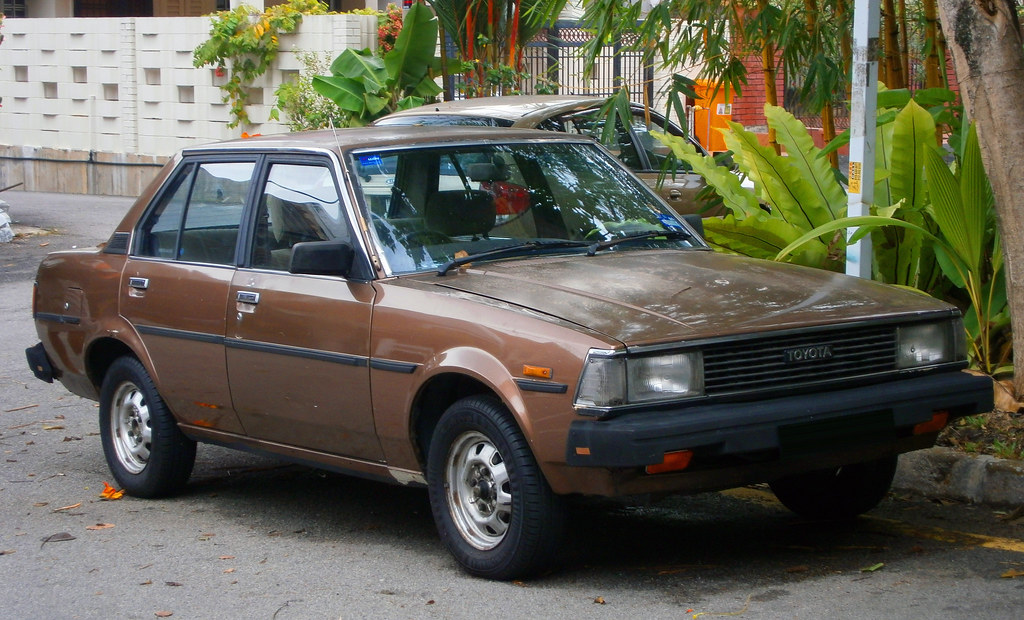
13. **Financial Impact: Estimating Yearly Fuel Expenses and Long-Term Ownership Costs**When meticulously evaluating the comprehensive financial implications associated with the ownership of either a Honda Civic or a Toyota Corolla, accurately and realistically estimating yearly fuel expenses emerges as an absolutely crucial and foundational step. This detailed projection directly and significantly impacts your personal budget over both the immediate and extended term, thereby solidifying its status as a pivotal factor in the overall vehicle purchase decision-making process.
For a truly comprehensive and insightful honda vs toyota comparison, it is absolutely imperative to integrate both the official EPA-estimated miles per gallon (MPG) ratings and a candid assessment of your individual, typical daily and weekly driving habits. This synergistic and data-driven approach provides a far more realistic, personalized, and actionable financial projection, effectively moving beyond generalized figures to accurately reflect your actual usage patterns and associated costs.
Consider a common and relatable scenario to illustrate this point: if an individual drives approximately 15,000 miles per year, and their Honda Civic consistently averages 36 MPG on a combined city and highway cycle, the estimated yearly fuel expenditure would hover around $1,250. This calculation assumes average gasoline prices of $3.50 per gallon and provides a clear, actionable baseline for understanding potential operational costs.
In a compelling and direct contrast, if the Toyota Corolla achieves a slightly superior 38 MPG under identical annual mileage and fuel price conditions, the estimated yearly fuel cost could potentially drop to approximately $1,175. This tangible and quantifiable difference vividly demonstrates how even seemingly minor or incremental variations in fuel efficiency can rapidly translate into significant cumulative monetary savings over an extended period of vehicle ownership, underscoring the power of small advantages.
Beyond the immediate and recurring cost of fuel, the broader realm of long-term ownership costs is also profoundly and intricately influenced by a vehicle’s inherent fuel efficiency. The accumulated financial savings derived from consistently better MPG can rapidly and substantially add up over several years, particularly in an economic climate characterized by persistent and often unpredictable fluctuations in fuel prices. Moreover, both the Civic and Corolla benefit from inherently lower maintenance costs due to their acclaimed reliability, collectively presenting either choice as a particularly smart and financially sound investment for judicious, budget-conscious drivers.
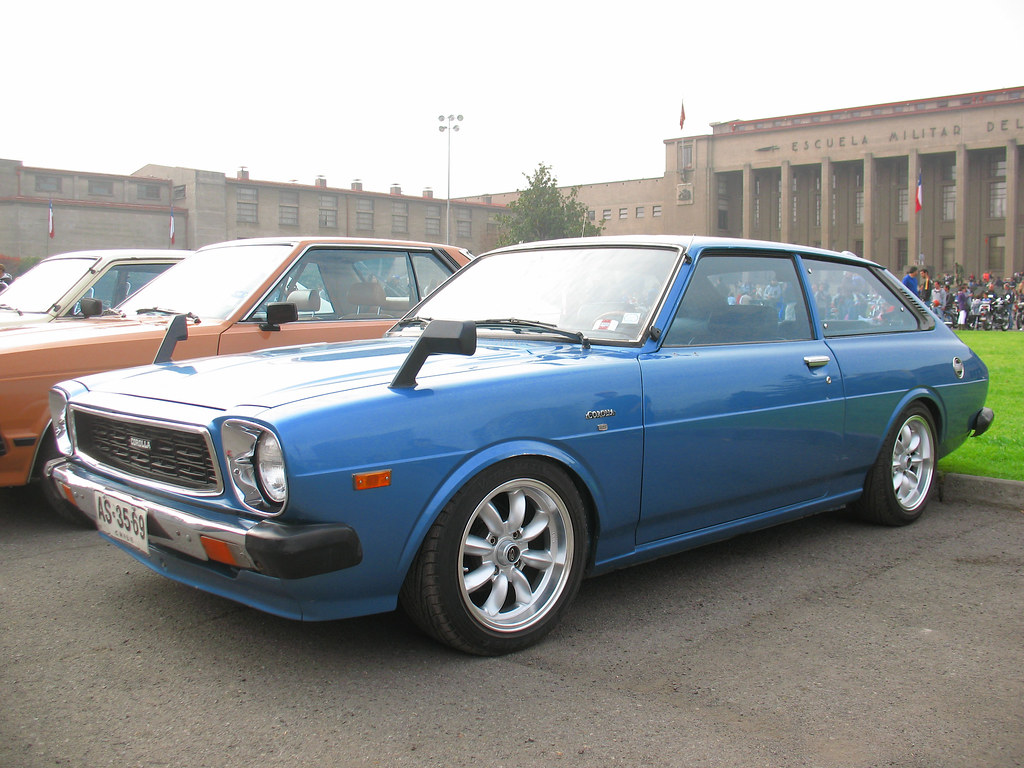
14. **Financial Impact: Fuel Efficiency and Resale Value**When meticulously considering the prospective future resale value of either a Honda Civic or a Toyota Corolla, a vehicle’s inherent fuel efficiency plays a remarkably significant and often decisive role in its long-term market appeal and subsequent valuation. This often-overlooked yet critical aspect of vehicle economics can, in fact, have a substantial and lasting impact on the total cost of ownership over time.
As a general and consistently observed market trend, vehicles that consistently boast superior miles per gallon (MPG) ratings tend to retain their market value far more effectively and robustly over extended periods. This phenomenon is largely attributable to the fact that discerning pre-owned car buyers are increasingly prioritizing economical and cost-efficient transportation options, making fuel-efficient models perpetually more sought after in the secondary market.
It is widely acknowledged and observed within the automotive industry that both the Honda Civic and Toyota Corolla frequently command notably higher resale prices in the competitive used car market. This strong and sustained performance is predominantly attributable to their exceptionally well-established and enduring reputations for stellar reliability and commendably low operating costs, which are universally highly valued by secondary purchasers.
This potent and advantageous combination of high fuel efficiency, proven reliability, and minimal operational expenses fundamentally makes both the Civic and Corolla particularly smart and strategic choices for individuals who meticulously aim to maximize their overall investment over time. Thoroughly understanding these significant long-term financial benefits critically underscores the profound importance of making a wise and well-informed vehicle selection and carefully considering how you finance your car right from the initial outset.
The comprehensive journey through the intricate details of the Honda Civic and Toyota Corolla’s fuel efficiency has illuminated a nuanced and multifaceted landscape where engineering prowess seamlessly meets real-world application. While official ratings undeniably provide a valuable initial benchmark, it is the synergistic synthesis of detailed owner experiences, advanced powertrain designs, and strategic driving habits that truly defines their long-term economic performance on the road. From the Honda Civic’s characteristic dynamic balance, epitomized by its responsive VTEC engines and adaptable features, to the Toyota Corolla’s unwavering reputation for bulletproof reliability and consistent fuel economy, both vehicles stand as formidable pillars of efficiency within the highly competitive compact sedan segment, each offering distinct advantages.
Read more about: Beyond the Showroom Shine: Identifying the Worst Financial Mistakes When Customizing a New Car
Ultimately, the profound choice between these two automotive giants transcends mere numerical comparisons; it rests firmly on an individual’s unique priorities and personal driving philosophy. Whether that preference leans towards a spirited and engaging driving experience, the compelling allure of superior hybrid savings, or simply the invaluable peace of mind that inherently comes with proven longevity and consistent dependability, both brands deliver. What remains unequivocally clear, however, is that both Honda and Toyota steadfastly continue to innovate and refine their offerings, ensuring that consumers are consistently presented with compelling options that empower them to make a thoroughly informed decision—one that guarantees not only a smart financial investment but also an enjoyable, economical, and profoundly efficient journey on every mile of the road ahead, truly setting the standard for compact sedan excellence.


